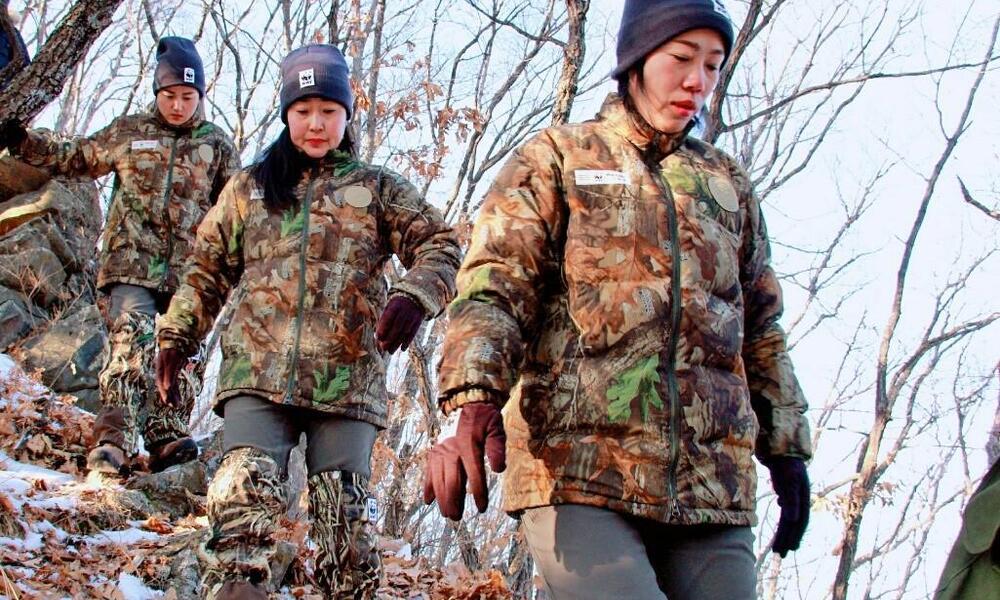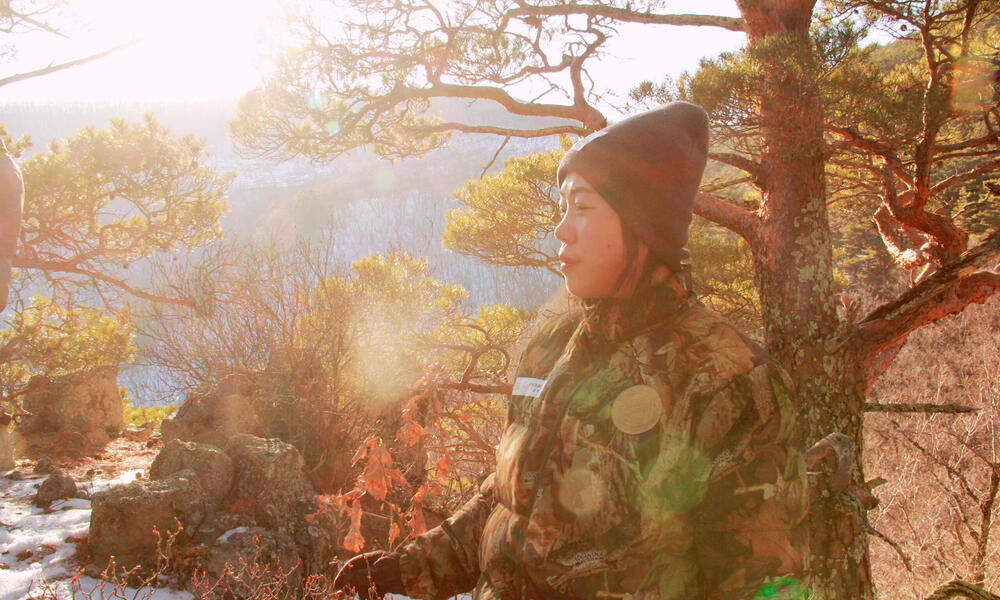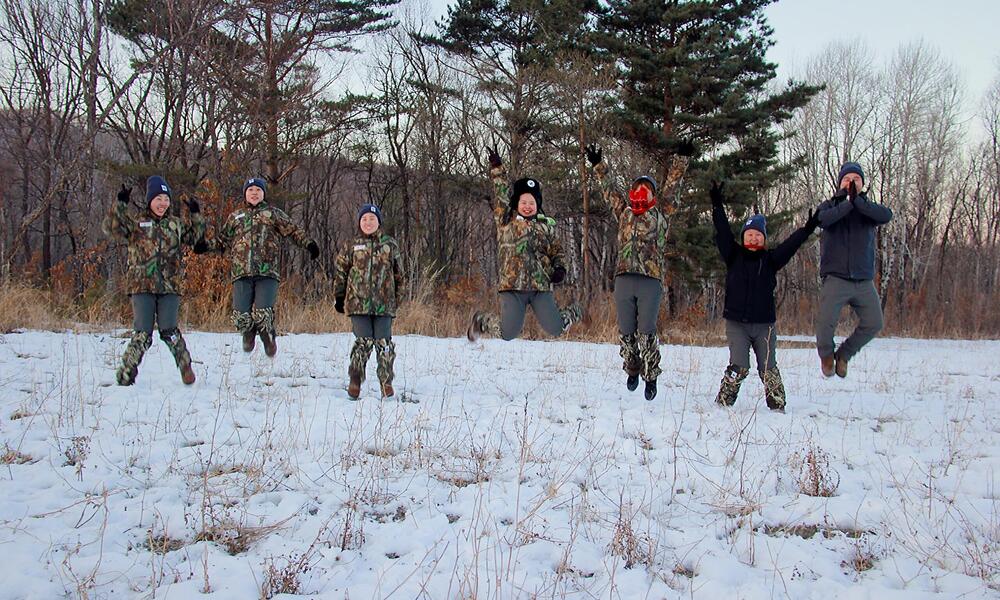In a recent global survey conducted in 26 countries with 6,241 rangers, only an estimated 7.5% of the ranger workforce was female. Addressing the need to include more women in this male-dominated profession is not only important to gender equality and human rights goals but can also improve efforts in conservation such as building stronger relationships with communities, and effectively managing parks and wildlife.
In Northeast China’s Heilongjiang Province, a unique ranger team exists – the only all-female patrol team monitoring China’s tiger range. A woman named Qui Shi is a member of the patrol team for the Dongning Forestry Bureau. Shi’s team will trek for hours to patrol, including recording data on big cats, setting up camera traps, and removing snares in this snowy and steep terrain, where temperatures can drop as low as minus 40 degrees Celsius. The team also interacts closely with their communities to understand the local people’s concerns, particularly related to human-wildlife conflict, and to communicate the importance of protecting local wildlife like tigers from poaching.
“I am very proud of the work that I do. We live beside the forest, regarding it as a companion, and I encourage my family to pay attention to the harmonious coexistence of humans and nature, and to care consciously about wildlife,” says Shi.
Here's a typical day for Shi's team:


